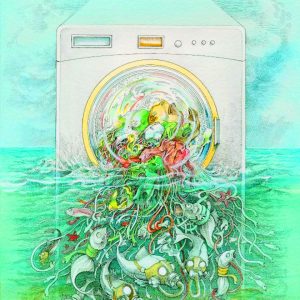Victoria Cruz-Solano
During quarantine, I would spend hours browsing through shein, urban outfitters, and forever 21 looking through endless pages of clothes to buy stuff. Did I really need more clothes? No. But I loved the serotonin kick that I got looking through the clothes, checking out, and receiving my package in the mail. I would see influencers on Instagram do shein hauls making me more inclined to go buy stuff. But I started seeing tiktoks about fast fashion and how most of these common clothing brands partake in this ‘fast fashion industry’. I started researching and learning about fast fashion and realized how many brands are fast fashion brands.
What is fast fashion? Fast fashion is when clothing is produced quickly to keep up with new trends. Fast fashion is very common because of the extremely low prices. Why spend $35 on a shirt where on clothing websites like Shein and Romwe you can spend $10? Although fast fashion produces very cheap costs for consumers it comes at a cost. Fast fashion brands often exploit workers by paying them very little and having them work in very unsafe conditions. Fast fashion also has a drastic effect on the environment producing microplastic pollution, textile dye pollution, and increased carbon emissions. The fast fashion industry contributes to the ever-growing plastic pollution in the ocean through microplastics.
Microplastics are from the fibers of your clothing. Surprisingly, most clothes are made with some plastic fibers, microfibers. Microfibers are usually very small and are found in acrylic and polyester clothing. When your clothes are washed once, up to 700,000 fibers can come off and go into the sea. According to Intelligent Living, the United States and Canada produce about 500,000 tons of microplastics from fibers that are deposited into the ocean. That’s the equivalent of 50 billion plastic bottles. The microfibers are now incorporated in the food chain because small fish mistake them for food and they work their way up the food chain where we eventually consume microplastics.


The fast fashion industry also is responsible for 10% of the world’s carbon emissions. People are buying more to keep up with trends, and the fast fashion brands are pushing out more clothing to keep up with demands. People bought 60% more clothes in 2014 than 2000 but only keep clothes half as long (McFall-Johnsen). While people are buying more clothing, they are keeping them for a shorter period of time. “The equivalent of one garbage truck full of clothes is dumped or burned in a landfill every second” (McFall-Johnsen).
The fast fashion industry produces cheap clothing to keep up with trends at a huge environmental cost. So what other options are there? Today, there are more options available for people looking to shop elsewhere. There are a number of sustainable clothing brands such as Boden and Patagonia. Many people can’t afford sustainable brands so they are turning to secondhand shopping. There are many second-hand shops available today through online sites such as depop, Poshmark, and mercari, and there are many thrift stores and consignment stores in cities.
The fast fashion industry provides cheap clothes at an environmental cost. We realize the impact of buying new on the environment and turn towards more environmentally friendly ways.
Citations
McFall-Johnsen, Morgan. “The Fashion Industry Emits More Carbon than International Flights and Maritime Shipping Combined. Here Are the Biggest Ways It Impacts the Planet.” Business Insider, 2019, www.businessinsider.com/fast-fashion-environmental-impact-pollution-emissions-waste-water-2019-10.
Hayes, Adam. “How Fast Fashion Works.” Investopedia, Investopedia, 16 Sept. 2020, www.investopedia.com/terms/f/fast-fashion.asp.
Steffen, Luana, et al. “’Fast Fashion’ Is Polluting The Oceans With Microfibers.” Intelligent Living, 25 Feb. 2020, www.intelligentliving.co/fast-fashion-is-polluting-the-oceans-with-microfibers/.